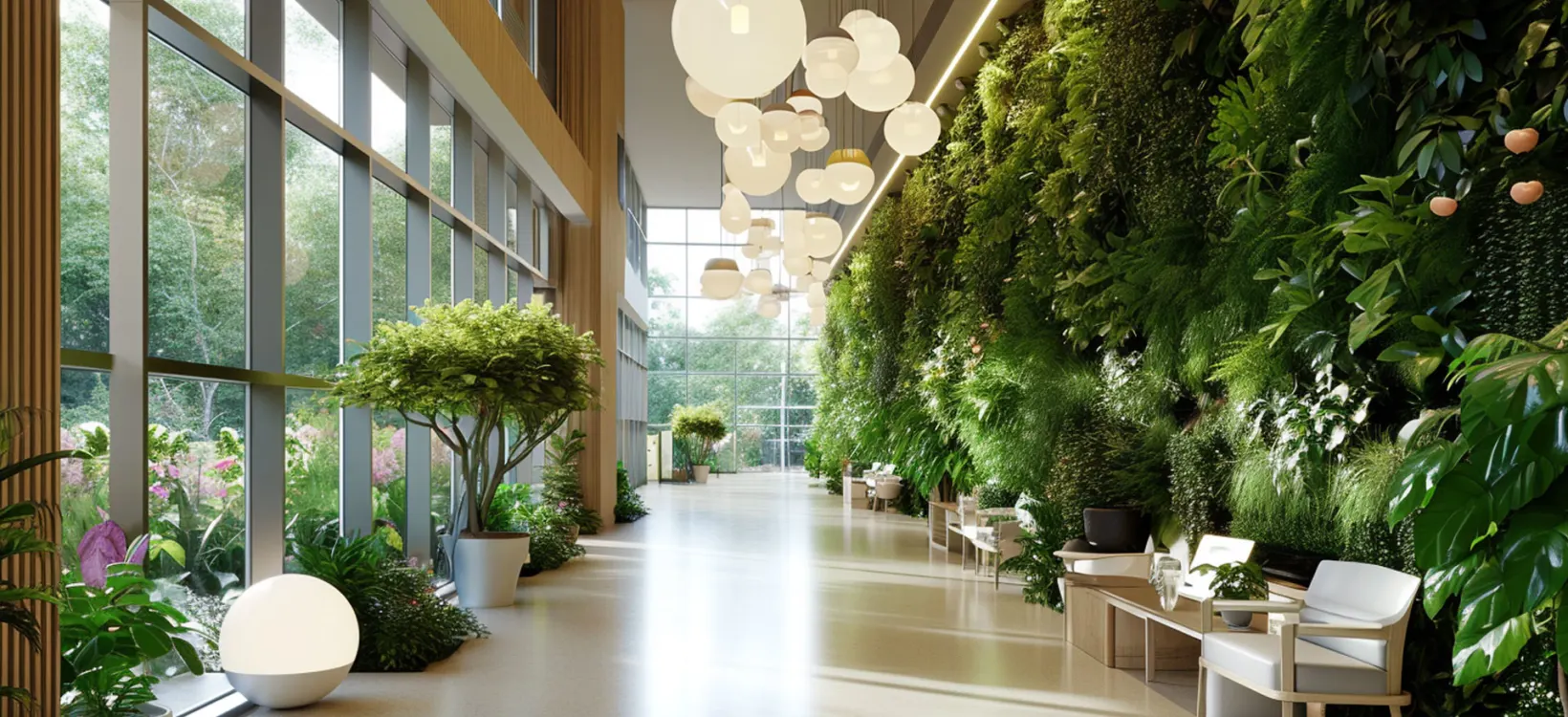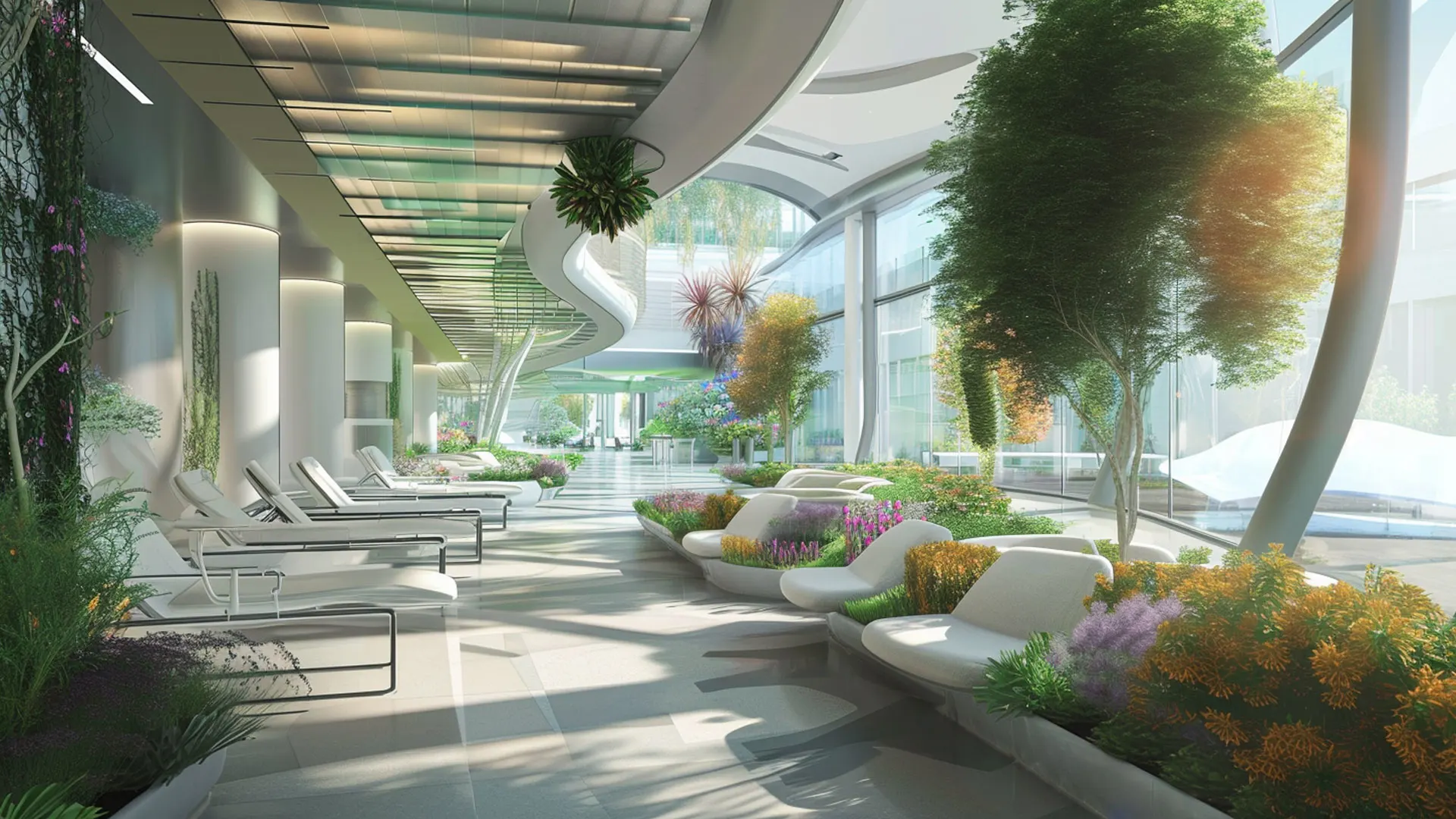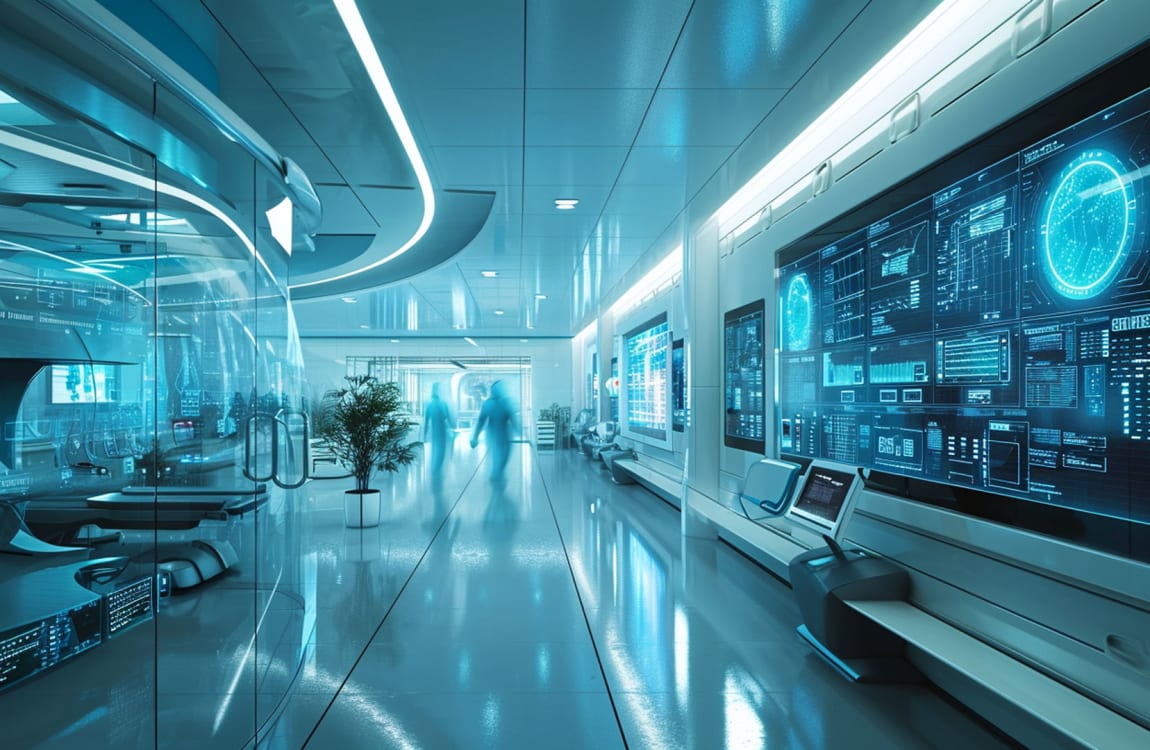Whether it's through biophilic design, patient-centered approaches, or inclusivity, healthcare facilities are evolving to better serve their patients, caregivers, and communities.
These trends reflect a growing awareness of the impact the physical environment can have on healing and the overall healthcare experience. As healthcare design evolves, the focus on well-being is likely to remain at the forefront, ultimately benefiting patients, staff, and the healthcare industry.
BIOPHILIC DESIGN
Connection to nature is a critical contributor to cognitive, emotional and physical health outcomes. Biophilic design celebrates our love for nature and innate desire to emulate it by bringing the outdoors inside. Incorporating natural elements such as plants, natural light, manmade materials such as textile pattens in earth tones that replicate natural elements, and materials like wood and stone can have a profound impact on the well-being of patients. It not only creates a visually pleasing environment but also reduces stress and promotes faster healing. Biophilic design is now a staple in healthcare facilities, with the aim of reconnecting patients with nature.
PATIENT-CENTERED-DESIGN
Patient-centered design revolves around putting the needs and preferences of patients at the forefront. It involves creating spaces that make patients feel valued and heard. This trend emphasizes comfort, privacy, and accessibility, ensuring that patients are active participants in their care journey. From adjustable furniture to private rooms, patient-centered design fosters a sense of belonging and control.
FLEXIBILITY AND ADAPTABILITY
The healthcare landscape is ever evolving, and flexibility in design has become crucial. Spaces that can adapt to changing needs, such as converting patient rooms into ICU units during a pandemic, are now a priority. This trend ensures that healthcare facilities can respond swiftly to unforeseen challenges while maintaining the well-being of both patients and staff.
TECHNOLOGY INTEGRATION
Advancements in healthcare technology are transforming the way care is delivered. Healthcare design trends include integrating technology seamlessly into the environment, from smart patient rooms to telehealth spaces. This not only enhances the patient's experience but also makes healthcare more efficient and accessible.
INCLUSIVE DESIGN
Inclusivity in healthcare design means creating spaces that accommodate everyone, regardless of age, ability, or background. It promotes a sense of belonging among diverse patient populations. This trend focuses on features like universally designed furniture and clear wayfinding to ensure that healthcare facilities are welcoming and functional for all.
WELLNESS SPACES
Gaining recognition as vital resources, wellness spaces are not just for patients but also for the well-being of caregivers. These areas serve as sanctuaries within healthcare facilities, helping to combat caregiver burnout. Spaces can include features like meditation rooms, natural gardens, fitness facilities, and counseling rooms, offering healthcare staff a means to reduce stress and maintain their well-being, creating a healthier and more supportive healthcare environment.
COLLABORATIVE SPACES
Collaboration is vital in healthcare, and the design of collaborative workspaces is on the rise. Whether through shared offices for healthcare providers or multidisciplinary meeting rooms, these spaces encourage teamwork, knowledge sharing, and a sense of belonging among healthcare professionals.
STIGMA REDUCTION
Providing a facility experience that promotes a positive community lifestyle, such as community health workshops, group fitness classes, or workout equipment makes it much less intimidating to also seek professional guidance for a health concern or procedure. A welcoming experience through the environment can be achieved and can be perceived as a much more positive experience than that of a traditional healthcare facility or hospital setting.




